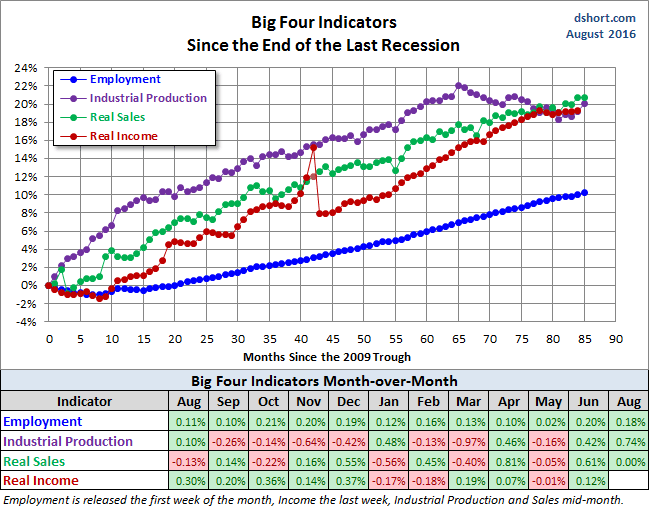Note: This commentary has been updated to include the Real Retail Sales data for August.
Official recession calls are the responsibility of the NBER Business Cycle Dating Committee, which is understandably vague about the specific indicators on which they base their decisions. This committee statement is about as close as they get to identifying their method.
There is, however, a general belief that there are four big indicators that the committee weighs heavily in their cycle identification process. They are:
The Latest Indicator Data
Nominal Retail Sales in August rose 0.2%, and the previous month was revised upward from 0.6% to 0.7%. Real Retail Sales, calculated with the seasonally adjusted Consumer Price Index, came in at 0.3% month-over-month (rounded from 0.26%). The chart below gives us a close look at the monthly data points in this series since the end of the last recession in mid-2009. The linear regression helps us identify variance from the trend.

The early 2014 dip in sales was generally written off as a temporary result severe winter, and the return to trend sales growth gave credence to the explanation. The early 2015 dip triggered the same explanation, but even with the subsequent recovery, Real Sales remain slightly below trend.
The Generic Big Four
The chart and table below illustrate the performance of the generic Big Four with an overlay of a simple average of the four since the end of the Great Recession. The data points show the cumulative percent change from a zero starting point for June 2009.

Current Assessment and Outlook
The US economy has been slow in recovering from the Great Recession, and the overall picture for 2015 has been a mixed bag. Employment and Income have been relatively strong. Real Retail Sales and Industrial Production have been distressingly weak. However, July Real Sales rebounded, and the August data, while a tad below expectations, continues to show growth.













Leave A Comment